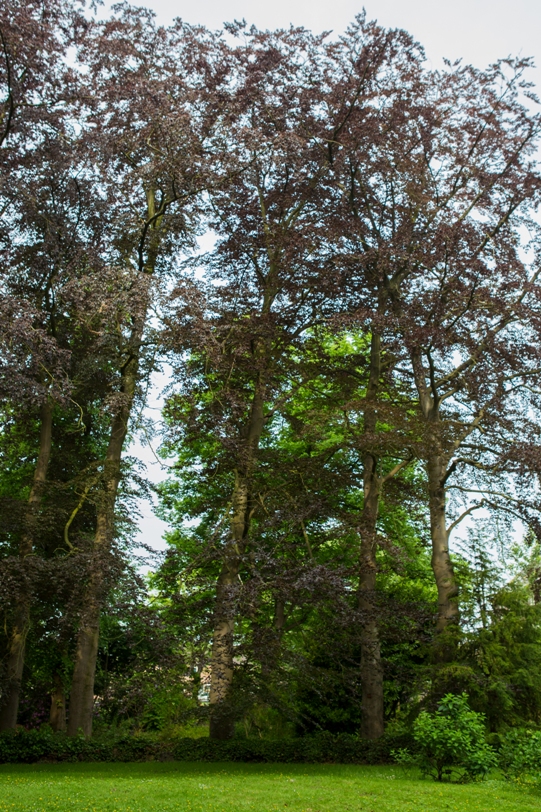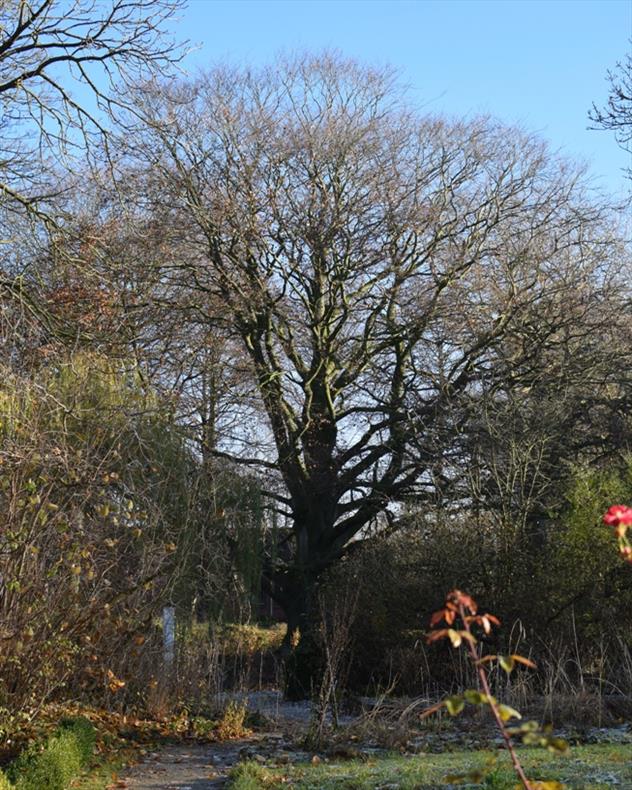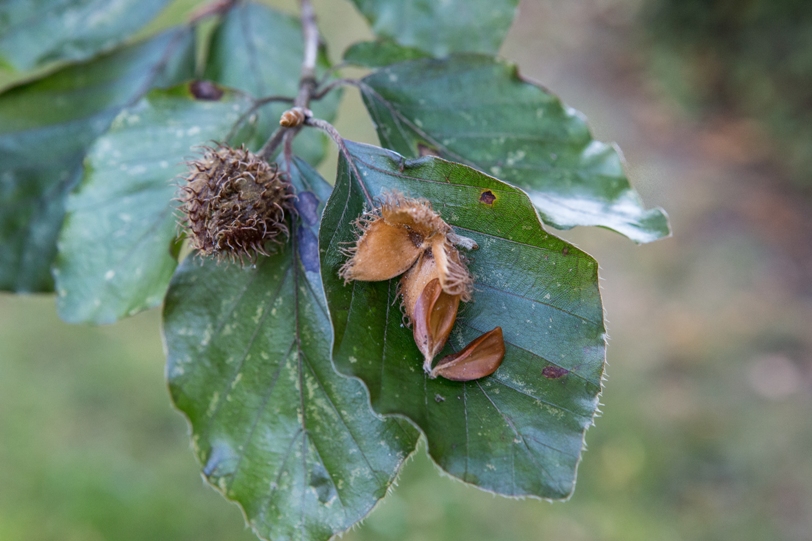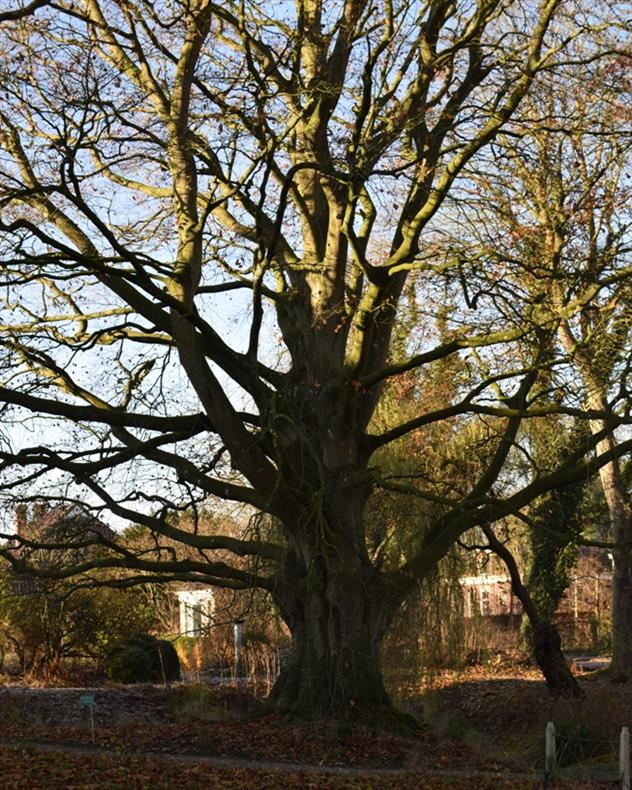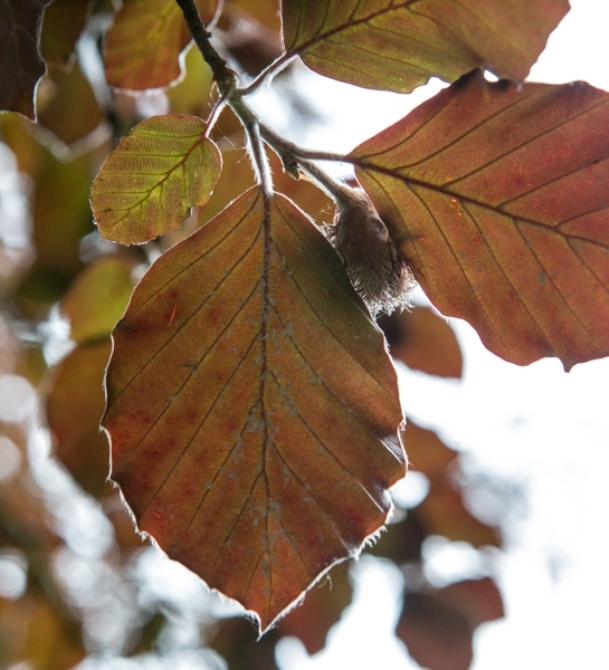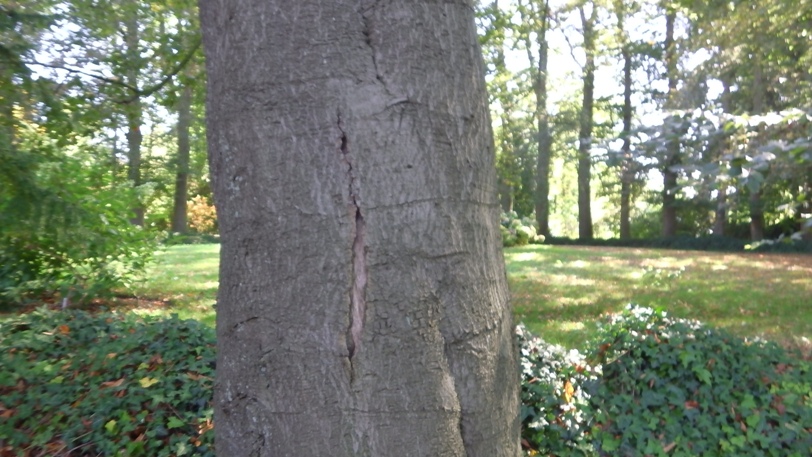Copper Beech
Fagus sylvatica 'Atropunicea'
Beech family (Fagaceae)
The western giant of mature, dark woods
The copper beech is a red form of the common beech, which is found in almost all European deciduous forests. Beech trees can reach a great age and thus height and size, and belong to the mature (climax) forest. Having red leaves is a rare mutation, which can occasionally occur in the wild. By growing the copper beech on as a cultivar it became a popular addition to parks and estates.
If people ceased mowing, pruning and felling much of Europe would be covered in forest: dense, dark forests with tall trees and a closed canopy and the common beech would be one of the most important components.
These trees can reach up to 46 m high, have thick straight trunks with silvery bark that support a dense crown of small green, serrated leaves. In the autumn the tree sheds its leaves yet in the spring and summer there are so many leaves that not enough sunlight is able to penetrate and allow other plants to grow on the ground beneath them. Occasionally a beech will fall and in the clearing around the tree there is a risk of plants becoming sunburnt by the sudden increase in light intensity.
There is only one common beech species, all the other beeches - the copper beech, weeping beech, fern-leaved beech, Dawyck beech and twisted beech - are descended from just a few individuals, all variants of the common beech.
Read more.... »Themes
Crown jewel on the Twickel Estate, in the Botanical Garden Arboretum Oudenbosch, of Domies Toen.
Beech wood can bend without breaking, is fine-grained and has relatively few knots and is therefore very suitable for the furniture manufacturing. The wood is not used for construction because without further treatment rapidly deteriorates and it is not strong enough to carry much weight.
During the late 19th and early 20th centuries in the Netherlands most beeches were grown at the Alph. van der Bom Nursery in Oudenbosch. A species of brown beech with large, shiny brownish-black leaves that van der Bom had brought in from abroad (Thomas Rivers in England), was propagated in Oudenbosch before being distributed. These trees are still being used to propagate new specimens through grafting or by selecting seedlings. Cultivar names are 'Purpurea Latifolia' and 'Riversii'.
Beech provides nourishment for wildlife such as badgers, squirrels and many birds feast on them; although edible they are rarely eaten by humans.
Beech tar, derived from the wood, was used for medicinal purposes.
During the late 19th and early 20th centuries in the Netherlands most beeches were grown at the Alph. van der Bom Nursery in Oudenbosch. A species of brown beech with large, shiny brownish-black leaves that van der Bom had brought in from abroad (Thomas Rivers in England), was propagated in Oudenbosch before being distributed. These trees are still being used to propagate new specimens through grafting or by selecting seedlings. Cultivar names are 'Purpurea Latifolia' and 'Riversii'.
Details
| Description: | Tree, shrub, up to 42 m high with dark purple leaves. |
|---|---|
| Distributions: | Only found in cultivation. |
| Habitat: | Woodland, often on chalky soil. |
| Year cycle: | Perennial (polycarpic decidous) |
| Hardiness: | -4 - 5 f (hardy - very cold winter) |
| Flowering period: | April - mei |
| Flower color: | Yellow, green |
| Notes on flowers: | Insignificant flowers. |
| Fruiting period: | Augustus - oktober |
| Fruit color: | Other |
| Notes on fruits: | Green to brown cupule; brown nutlet |
| At its best: | Mei - september |
